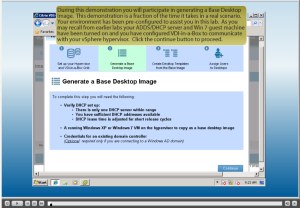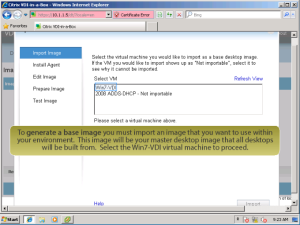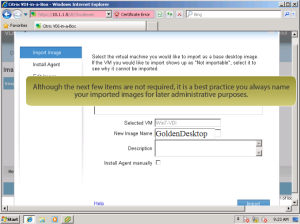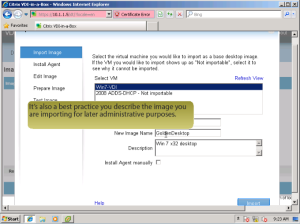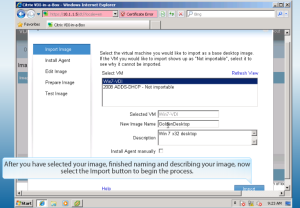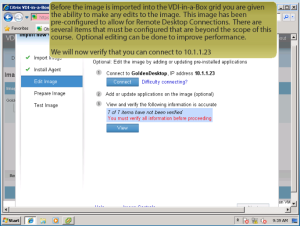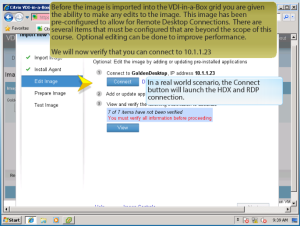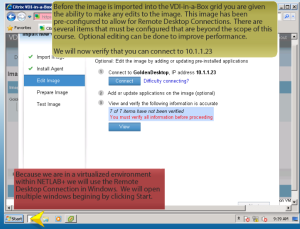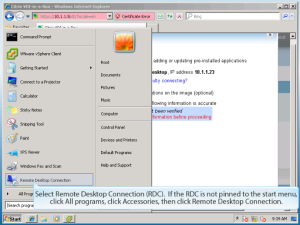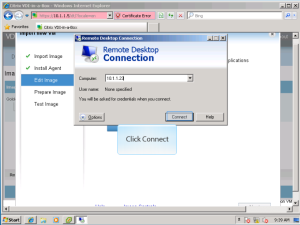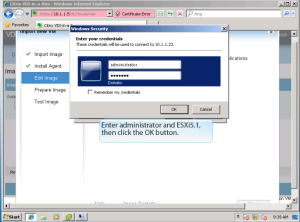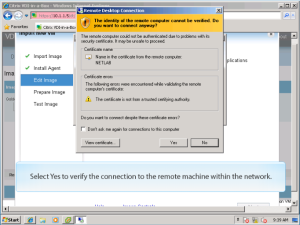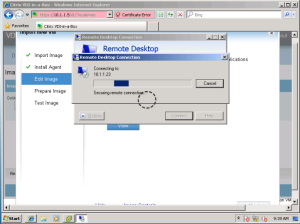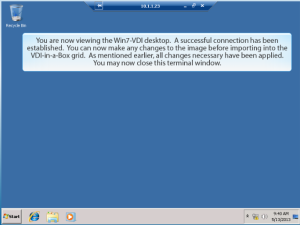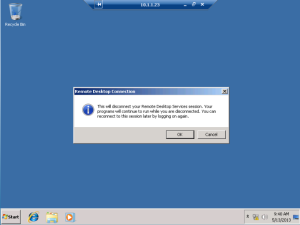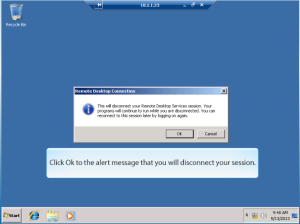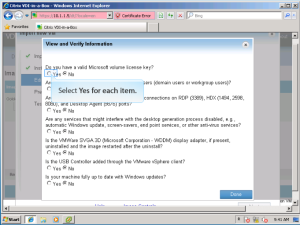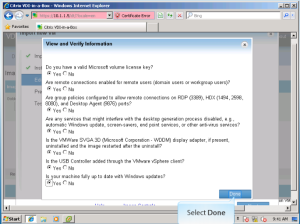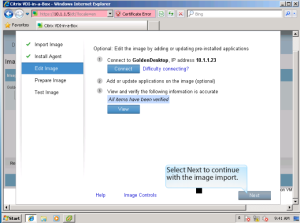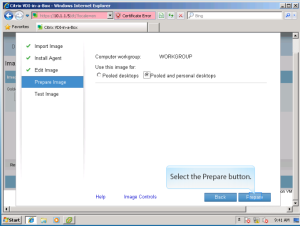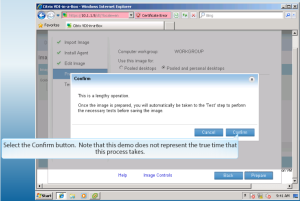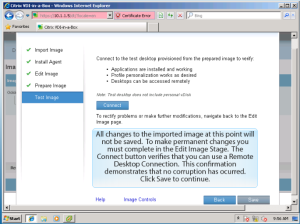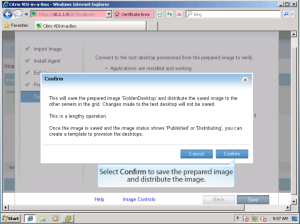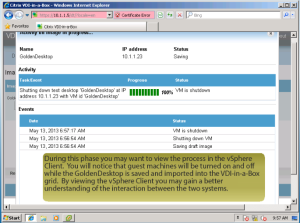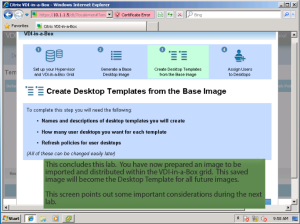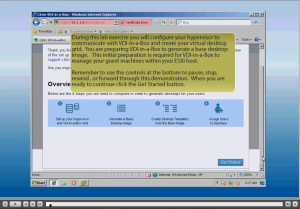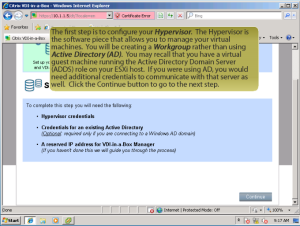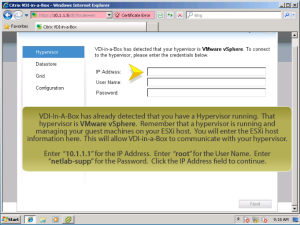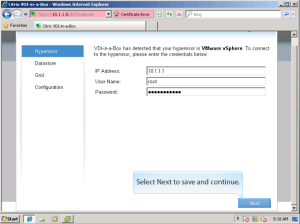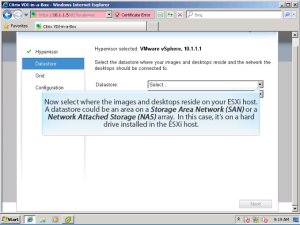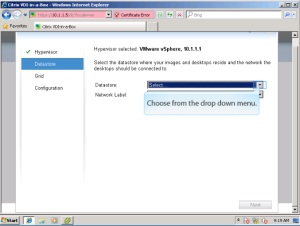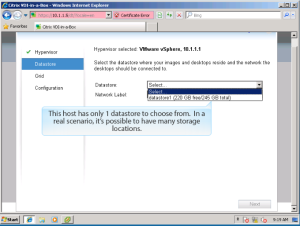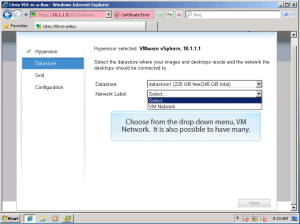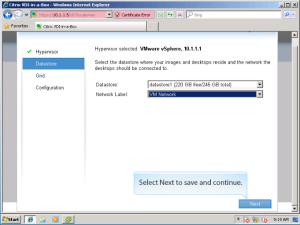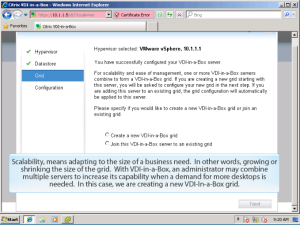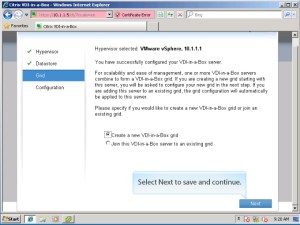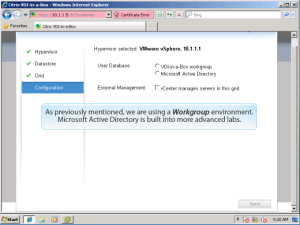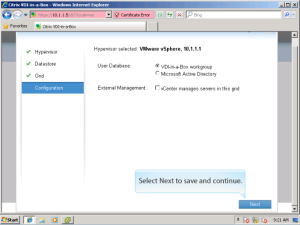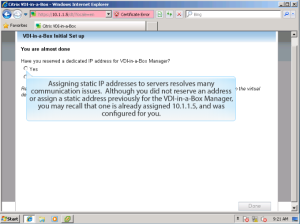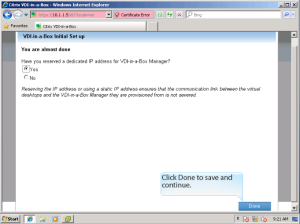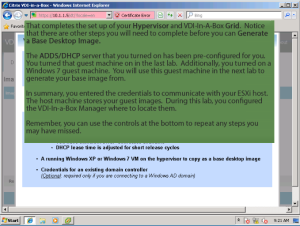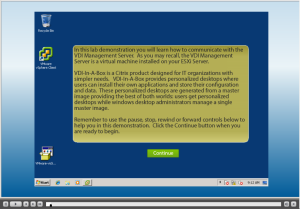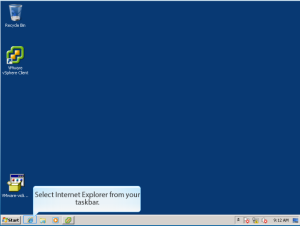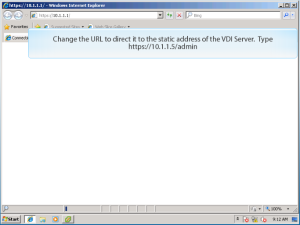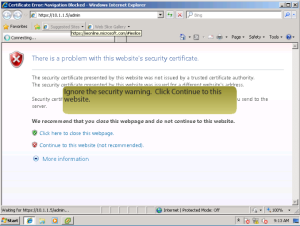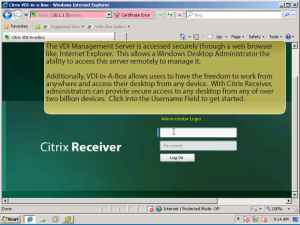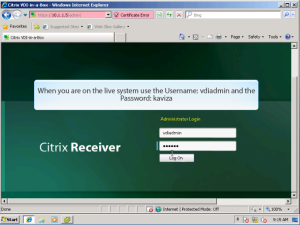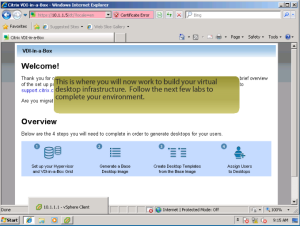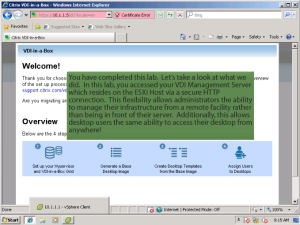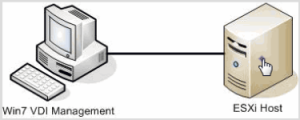Yesterday I discussed Virtual Desktop Infrastructure (VDI) with Citrix® VDI-in-a-Box™. To demonstrate VDI-in-a-Box™, I needed to create a virtual environment. As I mentioned in my earlier post, VDI-in-a-Box™ runs on an industry standard server. The specific technical needs for the server vary from organization to organization so I will not go into the specific technical requirements necessary to build out the virtual environment. Citrix® VDI-in-a-Box™ makes the benefits of desktop virtualization available to businesses of all sizes. It is not as important for you to fully understand all the inner-working processes as it is for your understanding of the concepts of desktop virtualization. My goal is for you to realize the potential of using Citrix® VDI-in-a-Box™ and the many possibilities that cloud computing and desktop virtualization offers businesses that employ this type of technology.
The learning objective is for you to learn how to manage Citrix® VDI-in-a-Box™ through the VDI management console. The following posts will include the setup, configuration, and deployment of a typical Workgroup environment in a small business. In my environment, I am completely virtual. However, the virtual environment performs exactly like the physical. This means that by the end of my posts for this topic, you could begin to install these products yourself. This is also an introduction to VMWare® ESXi™, VMWare® vSphere™ which I will discuss later. Citrix® VDI-in-a-Box™ will allow you to gain valuable insight and get a head start towards VDI.
Cost savings are just one of the many advantages of virtualization. Improving server utilization means you need fewer physical servers. Given that hardware eats up 40 percent of the average IT budge for businesses with fewer than 1,000 employees, virtualization can save your organization big money. Improving server and application management can also reduce the personnel time required for IT management, which further reduces costs. Additionally, when it’s time to refresh the physical hardware, you typically will get better return on your investment through virtualization.
According to the United States Department of Labor, Computer and Information Systems Managers are among the top 20 highest paying occupations. Employment of computer and information system managers is projected to grow 18 percent from 2010 to 2020, and growth will be driven by organization upgrading their IT systems and switching to newer, faster, and more mobile networks.
Just test the water by visiting some of the top employment Websites; Monster.com, Careerbuilder.com, Indeed.com, and TheLadders.com. Searching on keywords like VMWare Certified Professional, Citrix Certified Administrator, Computer Systems Design, Computer Systems Analysts, Network and Computer Systems Administrators, and Information Security Analysts. According to the Department of Labor each of these occupations range in pay from $69,160 to $77,740 (2010 median pay).
Gartner Research has indicated that cloud computing is an important and disruptive long-term force in the industry, with a significant potential for impact on every aspect of IT, the business and how users access applications, information and business services. Gartner makes further predictions that by 2014, IT organizations in 30% of Global 1000 companies will broker (aggregate, integrate and customize) two or more cloud services for internal and external users, up from 5% today.
Although there are varying degrees of server virtualization progress, server virtualization initiatives could be considered a “work in progress” today, and most organizations are planning aggressive implementations over the next few years. Server virtualization’s early roots were as a technology for software development and testing; it is now used extensively in IT production environments. When server virtualization progresses from test/development to production, most organizations start by virtualizing simple Windows workloads. As they gain experience with virtualization technology, they progress to more complex applications.
Citrix® VDI-in-a-Box™ is designed for IT organizations with simpler needs, VDI-in-a-Box makes it easy to deliver centrally managed, personalized virtual desktops securely to any device on any network all for less than the cost per user of new PC’s. Another advantage to using Citrix® VDI-in-a-Box™ is allowing Windows administrators to handle virtualization with a single intuitive management console, eliminating the need for storage specialists, network administrators, database administrators or virtualization experts.
